Overview
Version
| Report Server Version | Plugin Version |
|---|---|
| 11.5.1 | V4.1.0 |
 Note:
Note:Application Scenario
Models in 3D scenes often need to be combined with data to reflect the real-world scenarios' corresponding entity quantity changes in real-time. In FVS V4.1.0, the parameter model and the Parameter Model Update event are added, enabling certain 3D models to be generated in real-time within 3D scenes, for example, scenes with AGVs increased in a warehouse or cargo boxes increased on transportation tracks.

Notes
You are advised to use at most 3000 grids in the entire scene (Total number of grids in a parameter model = Number of grids in a single model × Number of data).
Data layers allow the model names generated by parameter models to be matched, with the matching method consistent with that of common models.
Parameter models can be displayed or hidden by configuration.
The effects unsupported by parameter models include reflection, model animation, animation solutions, wireframe styles, public viewing angle binding, and JS APIs.
Function Description
Parameter Model
Parameter models are models that can dynamically change based on data within a 3D scene.
1. Enter the custom 3D scene component editing page, select a model in the Model List, right-click the root node model, and click Convert to Parameter Model to convert a common model into a parameter model. The following figure shows the effect.

2. After clicking Convert to Parameter Model, set the data source, model name, and model position.

The following table describes details.
Configuration | Description |
Data Source |
|
Model Name | This parameter defines the name of the model generated based on data within the 3D scene. You can select fields in the selected dataset from the data source. |
Model Location | This parameter defines the model generation location. You must first select the coordinate type before configuring the specific location. Supported types include Latitude and Longitude, Space Coordinate, and Parent Object Coordinate.
|
3. After Model Data Setting is configured, return to the model list. The common model has been converted to a parameter model.
The model list will not display the child nodes of the model.
The parameter model can only be hidden, deleted, renamed, and combined.
Click Data Setting under the model list to reconfigure the model data.

Parameter Model Update
Parameter Model Update is used to update the generation and destruction status of a parameter model in a 3D scene.
1. Enter the custom 3D scene component editing page, choose Model > Scene Event > Parameter Model Update, and then click Add Parameter Model Update.

2. Five settings, namely Event Name, Specified model, Data Source, Model Name, and Model Position, are available for the Parameter Update Model event. The following figure shows the settings.

The following table describes details.
Configuration | Description |
Event Name | The default name is Parameter Model Update x. |
Specified Model | This setting is used to specify the model that needs to be updated in the current scene. You can only select a parameter model. |
Data Source | This setting is used to link the data source required by the update. You can only select a WebSocket source. You need to configure the name, ID, and URL of the data source.  Note: Note:
|
Model Name | Input the key value corresponding to the data source to define the name of the updated model. |
Model Location | The display settings vary according to the model coordinate type set during parameter model configuration.
|
3. Update rules are as follows:
Supported update operations include deletion and parameter model generation.
The update type is specified by opType.
Specific values for different update types are as follows:
upsert: Data is updated if the data exists, and added if the data does not exist.
delete: Matched data is deleted.
If data is duplicate during the parameter model update, the new model will not be generated repeatedly, and the model deletion will always be executed, with the latter overriding the former.
 Note:
Note:The JavaScript codes are as follows:
The code is as follows for playback start.
[
{
"id": "Parameter Model Update 1",
"data": [
{
"opType": "upsert",
"name": "cart001",
"position": "0,0,0"
},
{
"opType": "delete",
"name": "cart002",
"position": "0,0,0"
}
]
}
]
Example 1: Parameter Model
Data Preparation
Data fields should include the generated model name and model position. This section takes the parent object coordinate as an example. The cargo box position is the name of the generated track model for the cargo box.

Adding a Model
Load the cargo box model into the 3D scene.

Conversion to a Parameter Model
Right-click the cargo box model, select Convert to Parameter Model, and configure the data source.

Set Model Name to Cargo Box Name, Model Position to Parent Object Coordinate, and Reference Model Name to Cargo Box Position.

Configuring Data Layers for a Parameter Model

Final Effect
Five cargo boxes are automatically generated on the transportation track in the 3D scene.

Example 2: Parameter Model Update
How to generate cargo boxes on the transportation track in real time?
Parameter Model Setting
Configure the parameter model as described in the section "Conversion to a Parameter Model". You can set the data source to an empty table, in which case the model will not be automatically generated in the 3D scene after the data source editing.

Adding a Parameter Model Update Event
Configure the corresponding key values under Scene Event > Parameter Model Update > Add Parameter Model Update.
WebSocket data interpretation:
id: event name
name: model name
opType: whether to generate or destroy a specified model
position: model position


Effect Preview
The following figure shows that the cargo boxes are generated on different tracks in real-time.







